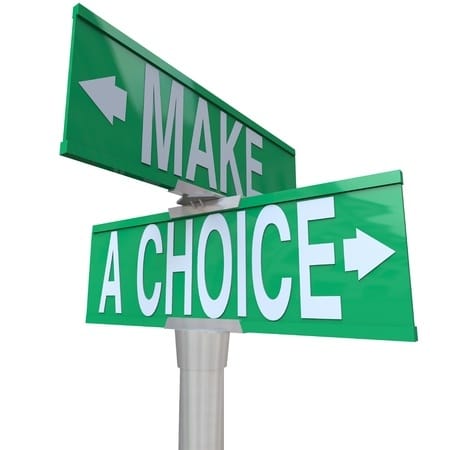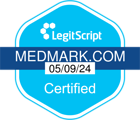
Do you know what NIMBY stands for? It’s the acronym for a phrase that residents of a community use when they don’t want something to be built or operated near their homes: Not In My Back Yard! That phrase describes perfectly the way most people feel about having methadone treatment programs opened in their neighborhoods. But new research shows that maybe they should step back and think twice, because having Suboxone and methadone treatment programs located near their homes could add up to unexpected benefits.
The so-called conventional wisdom, according to an editorial on Addiction Treatment Forum, tells us that drug treatment programs bring the horrible violent crimes that “all” drug users commit. We are warned to expect robbery at gun point, muggings, car theft, prostitution, and more, all from people trying to raise the dollars they need to buy their dope.
But a research study conducted in Baltimore compared violent crimes committed around 53 methadone treatment programs in Baltimore with the crimes that occurred near or around liquor stores and convenience marts. There are significantly more rapes, homicides, assaults, and robberies near the stores than there are around the methadone treatment programs.
Fears Within Communities
Many people who live within a community cite unfounded statistics to back up their fears that the clients attending methadone treatment programs will bring with them the worst kinds of behaviors and attract the criminal element in droves. They fear that the people who visit the methadone treatment programs will go in and get their medication and then turn themselves loose on an unsuspecting community in order to rob them, steal their cars, and worse, all so they can pay for the very drugs they are in treatment to stop using.
The research was published in the Journal of Studies on Alcohol and Drugs, and it focused on communities with methadone treatment programs in Baltimore versus similar communities with liquor stores, mom and pop-owned small grocers and larger, corporate-owned convenience stores. There was a 25 percent increase in crimes around the liquor stores and small grocers compared with the methadone treatment programs.
Bias, Bigotry, and Methadone Treatment Programs
When people in a community hear about plans to open a methadone treatment program, they react out of fear that drugs and despair will descend upon them the minute that the treatment center opens its doors. They worry that the value of their homes will plummet. They fear that drug addicts will endanger their children. There is a great deal of stigma associated with drug treatment that involves methadone or Suboxone. People believe that those with addictions have brought their troubles on themselves, and they bear an uneasy reluctance to offer them any kind of help.
Yet addiction to drugs of some kind including alcohol affects 65 percent of families, according to statistics cited by Michael Dorsey writing for the Examiner.com. That means that for every ten households in a community, between six and seven of those households are affected by addiction. It may be that the people who live in that house do not abuse any substances, but they have a close relative who does. In the same study, 67 percent of the families surveyed admitted they felt stigma toward people who attend methadone treatment programs.
Think about what the average person understands about addiction if they have never been educated about the benefits of methadone treatment programs. It’s true that the people coming for the first time may look less than their best, especially if they are feeling the symptoms of withdrawal. They may have pale, clammy skin and red-rimmed, bleary eyes. They may have runny noses, with little attention paid to hygiene. So the cover on the book is not very promising that a good story may be found inside. But, those people come to methadone treatment programs because they are reaching out for help, and they do get better.
People who oppose methadone treatment programs in Baltimore or operating within their community fear not only increased crime rates but also a greater influx of racial minorities seeking access to treatment. But that’s just a misconception associated with the stigma against addiction, because more Caucasians than any other racial group participate in treatment at methadone treatment programs.
No matter what their racial or ethnic makeup, clients come prepared to do battle against addictive substances and fight for their lives. They share the same hopes and fears as other people, and they gladly participate in methadone treatment programs that will offer them the resources and education they need to become productive members of society again. In fact, increasing numbers of upper middle class business professionals and college students become addicted to opiate pain pills. So it’s not unusual to see people dressed in business attire who stop at their methadone treatment programs to get their daily medication as the first activity of their day, and then they move on to school or work.
The Benefits of Methadone Treatment Programs
Methadone treatment programs are very mindful of the potential for criminal activity that could be associated with their facilities based on the fact that relapse happens. For that very reason, many of them employ officers from their local police force to patrol the streets surrounding the clinic or even hire private security within the clinic to eliminate the potential for any negative behaviors. It’s likely to be much safer around your local methadone treatment program than it would be when you’re standing in line at a convenience store.
People who oppose the presence of methadone treatment programs in Baltimore or elsewhere should also consider that those programs meet rigorous federal and state licensing and certification requirements. Those requirements may include submitting an environmental impact statement, and the facility’s owners will be mindful of maintaining an attractive site within the community.
Many methadone treatment programs augment their services with community drug prevention programs. Some services may be free to the people who want to participate, and other services may be contracted with local school districts so that children and teenagers have the opportunity to become educated about addiction and truly learn that just saying no is much more than a slogan.There are also increased mental health services available within communities that offer methadone treatment programs. In Baltimore and throughout the United States, over half of all persons with addiction are affected by co-occurring mental health disorders. That means access to treatment for emotional health may be increased in your neighborhood with the advent of a clinical opiate treatment program.
If you hear that a methadone treatment program may open its doors in your neighborhood, embrace the idea. Consider the decreased crime rate instigated by the increased police presence. Enjoy the extra commerce in the neighborhood from its clients, employees, and other stakeholders. Take advantage of community mental health and social service resources offered to the people who live there and within the schools. Remember that increased federal and state funds that accompany methadone treatment programs will benefit the community. It’s a time when you should just say yes.


